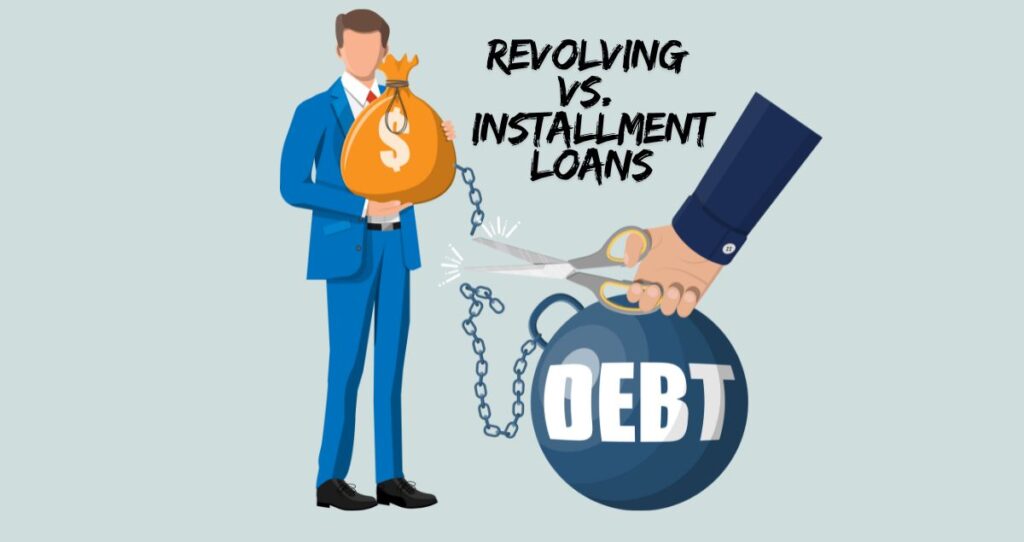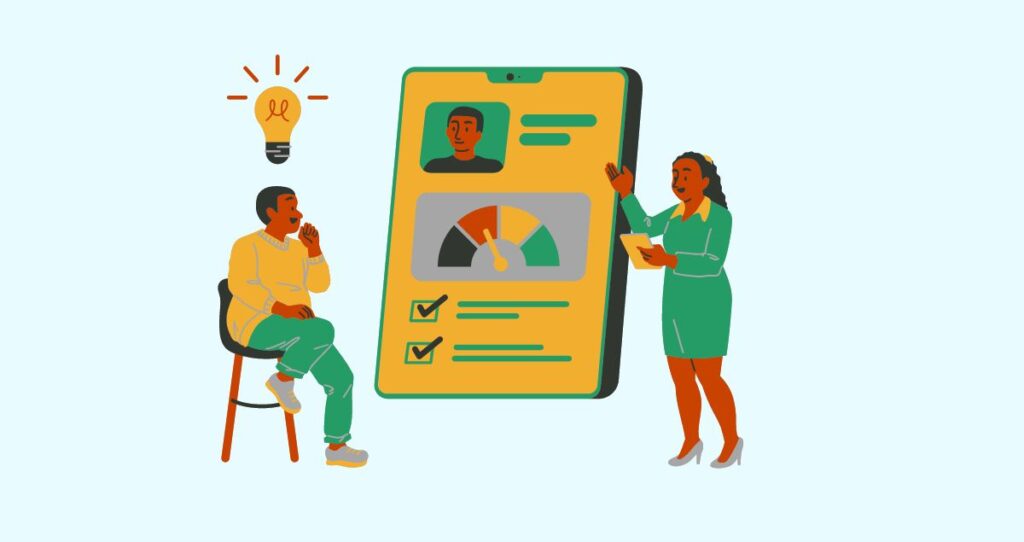Taking out a loan is a great way to finance expensive purchases, such as a home purchase, without waiting 10 years or more for savings. However, loans come with the risk of default and inevitable financial hardships when you don’t do due diligence. Most people take out loans only to regret their decisions a few years later because they waste their savings to buy things they don’t need or borrow more than they can afford to pay back. Knowing the list of things to do before taking out a loan, which I will cover in this post, can help you avoid financial hardships and make the right money decision.
For example, raising your credit score, having proof of income, and reducing your debt-to-income ratio can help you qualify for many loans at favorable rates. This article will walk you through the 10 most important things to do to qualify for the right financing and avoid the risk of default and financial hardships.
Here is a list of things to do before taking out loans.
1. Check your credit score and credit reports.
A good credit score comes in handy when taking out loans. Not only does it allow you to qualify for lower rates, but it also increases your application approval rates with favorable terms. The credit score requirements will vary depending on the type of loan you are applying for and the lender. For example, if you want to buy a home with a conventional loan, you will need at least a 620 credit score to qualify. Some lenders might require a much higher credit score.
On the other hand, if you are using an FHA loan program, the score you need could be as low as 500. Knowing your credit score is the first thing to do before taking out a loan. You need to know if your score is enough to qualify for loans or if you need to raise it before applying for loans. Check out this guide to getting an 800 credit score.
You can check your credit score for free online. Most credit card issuers offer free credit scores as part of their services. You can also check your FICO score for free from myFICO. CreditKarma also allows you to check your VantageScore for free; creating an online account is all it takes.
You must also check your credit reports to ensure that the information on your reports is current and accurate. If there are any errors, these need to be disputed with credit reporting agencies to increase your loan application approval rate. Each credit reporting agency(Equifax, TransUnion, and Experian) gives you a free copy of your annual credit reports once every 12 months. Use this link to download a free copy of your credit reports from each bureau.
2. Understand your financial needs and goals.
While you can qualify for loans with lower rates, it does not mean you need to take out a loan. You still need to borrow money only when it makes sense and if the loan aligns with your financial needs and goals.
Before you take out a loan, determine why you need to borrow money and what you plan to use the funds for. This will help you determine how much you need to borrow and assist you in making a proper repayment plan.
For example, if you want to take out a loan for a roof repair, understand how the loan will impact your existing financial goals. Will the loan affect your ability to contribute to your retirement savings accounts? Are you going to have difficulties affording other financial obligations due to having more debts? Knowing the implication of the loan to your current and future financial goals will help you see whether you should take out a loan or if you need to put the project on hold for a little longer.
3. Set up a budget
You might not be a big fan of budgeting, but having a budget is essential before you take out a loan. Your budget does not have to be complicated. How to create a simple personal budget before you take out a loan? I have written about the steps to create a personal budget, which you can read in this post. The following are the main steps to make a quick budget before you take out a loan.
- Write down all your income from all sources and calculate the total net income by adding all your income.
- Write down all your current monthly expenses and add them to calculate the total.
- Calculate your savings by subtracting your total expenses from your total income.
Now, the main questions are: How much are you saving? Will those savings be enough to cover the additional personal loan payments you are taking out?
Since the additional debt amount will come with a monthly payment, you need a budget to understand how the additional debt will affect your financial situation. In other words, a budget will help determine whether you can manage an extra loan repayment comfortably without straining your finances. If your savings are insufficient, you might need to raise your income by working extra hours, getting a part-time job, or starting a side hustle.
Check out this list of 49 side hustles and ways to make money fast.
4. Compare interest rates
Different financial institutions offer varying interest rates. Shop around for your favorite loans with the lowest rates possible. A lower interest rate will save you money due to monthly payments and the ability to repay the loan faster if you choose to do so.
Typically, you need to be prequalified for many loans, which enables you to compare different loan providers. When picking between multiple loans, be sure to check the interest rates, fees, origination fees, closing costs, etc. All these fees and higher rates can add up to higher expenses, making the loan unaffordable.
You might also like to learn about these clever ways to lower the cost of your loan.
5. Read the fine print
Before signing any loan agreement, read and understand all the terms and conditions carefully. Some loans come with hidden fees that could cost you a lot of money throughout the loan’s lifetime. For example, some loans come with a pre-payment penalty, a fee you pay if you make a higher-than-acceptable payment in any given period. You might also be required to pay private mortgage insurance(PMI) if you don’t have the required down payment.
Read the fine print to avoid hidden fees, penalties, or unexpected charges. Ensure that you read all the loan terms and discuss anything that conflicts with your financial goals with the lender. Only sign the loan if you agree with every word in the agreement.
6. Prepare necessary documentation
Before you apply for any loan, ensure that you have all the necessary documents to get the approval without any hassle. This usually includes identification, proof of income, and possibly collateral documentation. A collateral can be your assets, such as a property, car, or investment. Most lenders require continued work employment for two years to prove income.
If you recently moved and got a job, you can still get a loan, but the lender will require pay stubs or proof of employment, such as a job offer letter. For evidence of past employment, you will need copies of tax returns or paystubs showing your income for the past two years. Again, income requirements vary by lenders.
7. Consider the repayment terms.
Before you take out a loan, work with your lender to establish a repayment plan. Your repayment plan usually depends on how much you are borrowing, your income, and the loan terms. Longer-term loans have lower monthly payments, while shorter terms have higher monthly payments.
Depending on your financial goals, current income, and existing debt, sign up for loan terms with an affordable repayment plan. If you don’t have enough income, signing up for a longer loan term makes your monthly payments affordable. Remember that keeping the loan longer costs you more money in interest charges. However, it is better to sign up for a longer term and pay it off faster than a shorter term and risk falling behind on your payments.
You might also like
- How to avoid repossession of your car
- 19 Best debt management strategies to lower your debt
- How to avoid foreclosure on a home?
8. Consider alternative financing
Even if getting a loan is easy, you still need to consider alternative funding, as these could be more affordable and help you save on interest charges. For example, if you have friends and family members who can support you financially, try getting their support before you take out a loan. Alternative funds come in handy, especially if you don’t meet the loan requirements, have a tight budget, or are trying to avoid expensive loans.
9. Seek expert advice
Don’t hesitate to seek assistance if you doubt anything about taking out a loan. An expert’s opinion could help you make an informed decision and avoid future financial troubles. For example, a financial planner or a loan counseling agency can help you know if taking out a loan is a significant financial decision for you and how much you should borrow, given your financial decisions and future goals.
10. Use a cosigner
If you don’t have all the requirements to get a loan and still need money, a cosigner can help you get the funding you need. A loan cosigner is someone with a good income and high credit score who signs the loan application on your behalf to help you qualify for the loan. Typically, a cosigner agrees to take on all loan responsibility if you fail to pay it back. A typical cosign can be a family member, a friend, or anyone willing to help you get the loan.
Extra loan tips
What down payment do you need for a house?









